We had a chilly but beautiful morning at Ein Bokek on the Dead Sea. I woke up at 6:30am and quickly got on my bathing suit and water shoes to go take a dip in the Salt Sea. This area is breathtakingly beautiful in the sunlight with the water bracketed by the desert mountains.
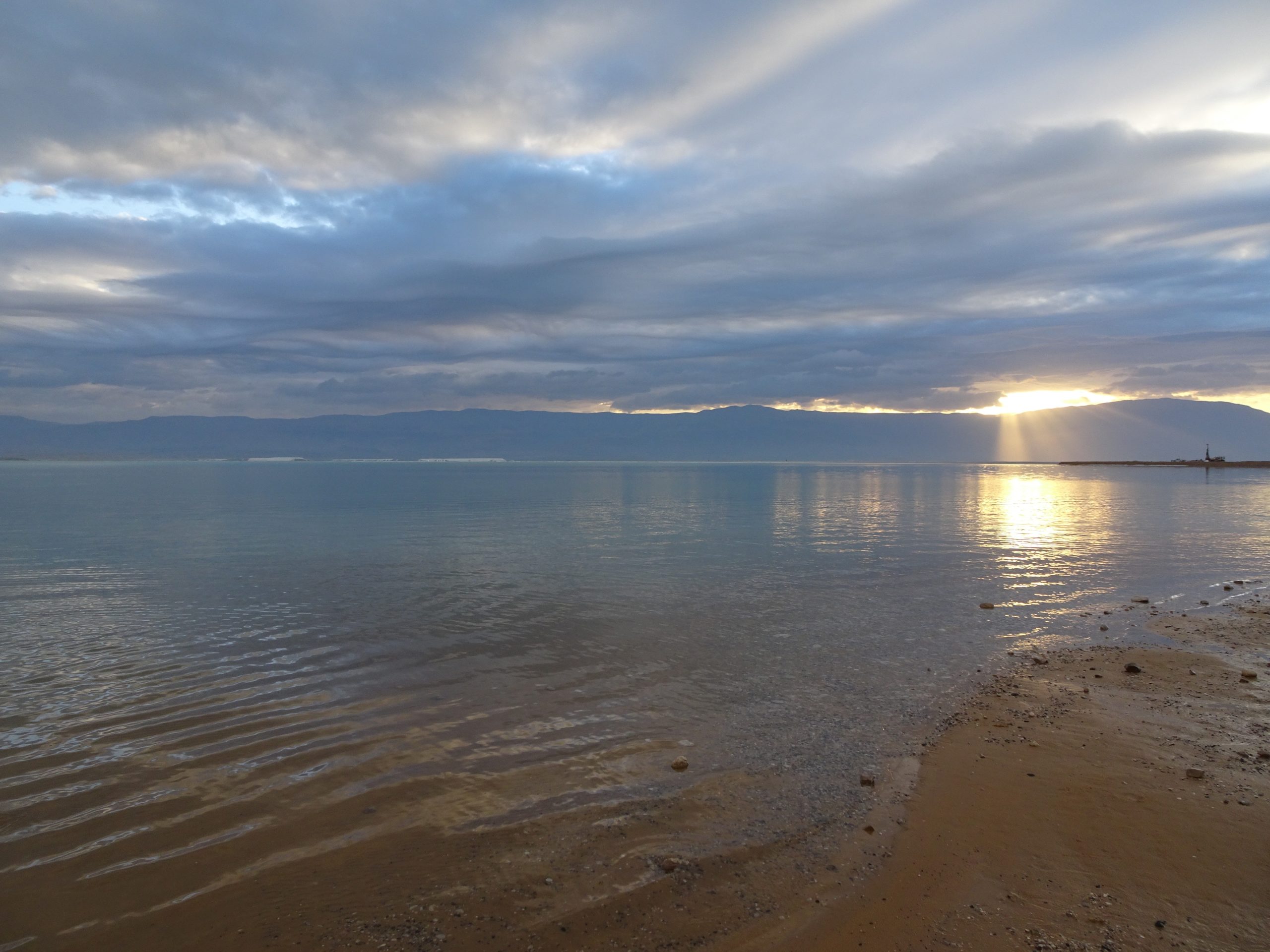
The Dead Sea
I wrote about some statistics related to the Dead Sea yesterday, so I won’t repeat those. However I did want to mention briefly about the Dead Sea in the Bible.
Scripture contains 16 references to the Dead Sea, calling it by the names “Salt Sea” (Gen 14:3; Num 34:3, 12; Deut 3:17; Josh. 3:16, 12:3, 15:2, 5, 18:19), “Sea of the Arabah” (Deut 3:17, 4:49; Josh 3:16, 12:3; 2 Kgs 14:25) and the “Eastern Sea” (Ezek 47:18; Zech 14:8). Only once is the Dead Sea designated as a location (Gen 14:3). The three names are used once each to communicate direction (toward the). The remaining 12 references to the Dead Sea are used in the context of describing the borders of the promised land. This indicates that the Dead Sea was more of a border for the land than a destination for the people.
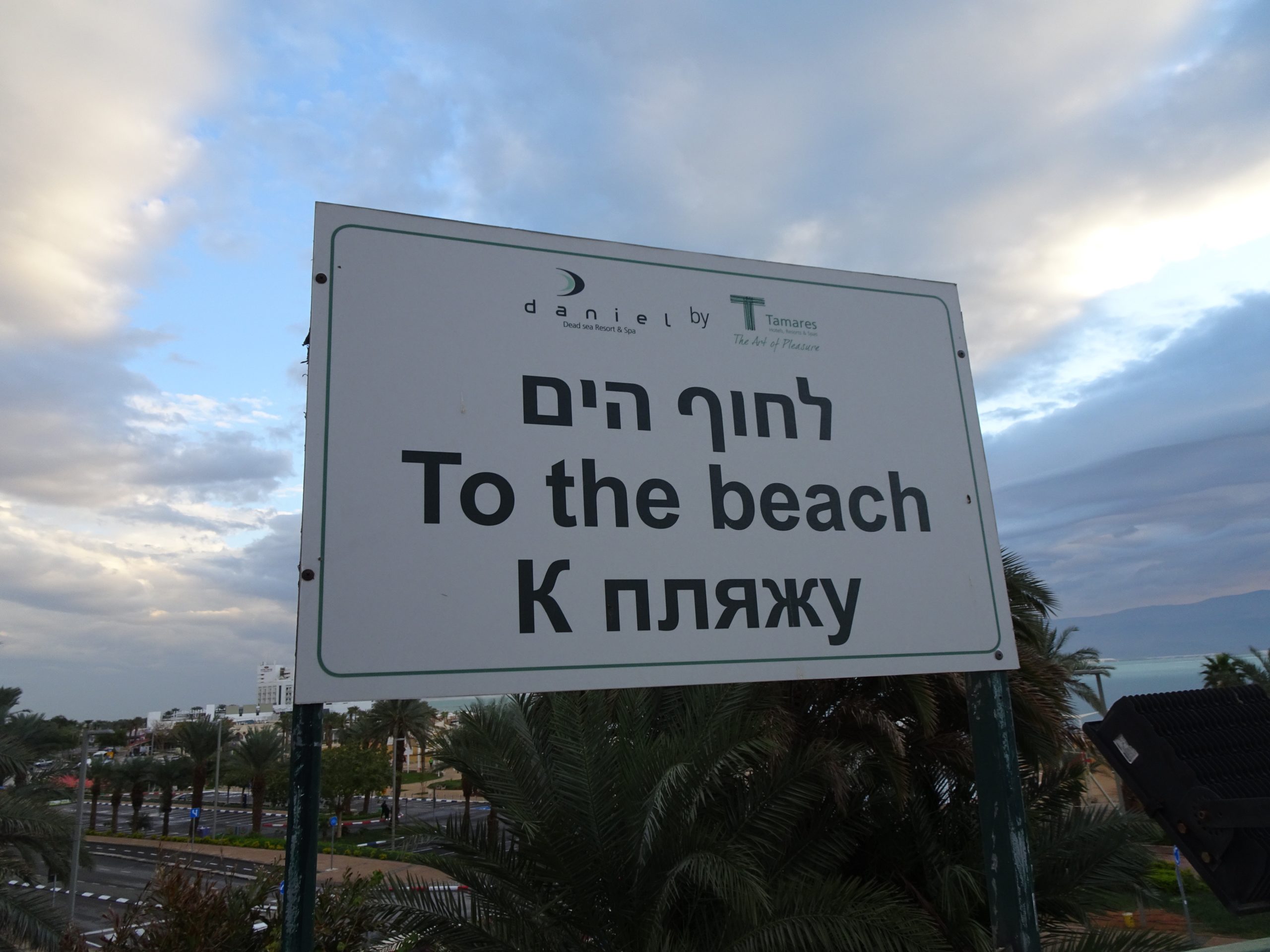
Daddy went with me as we walked down to the Ein Bokek Beach. It was in the mid 50s and I was quite concerned about how cold it would be. I ran into a few others from the group as they were coming back and they assured me that it was not bad at all once you get acclimated to it. I was also advised by Gary Sartain to wear my water shoes all the way in as the bottom is covered in round salt rocks.
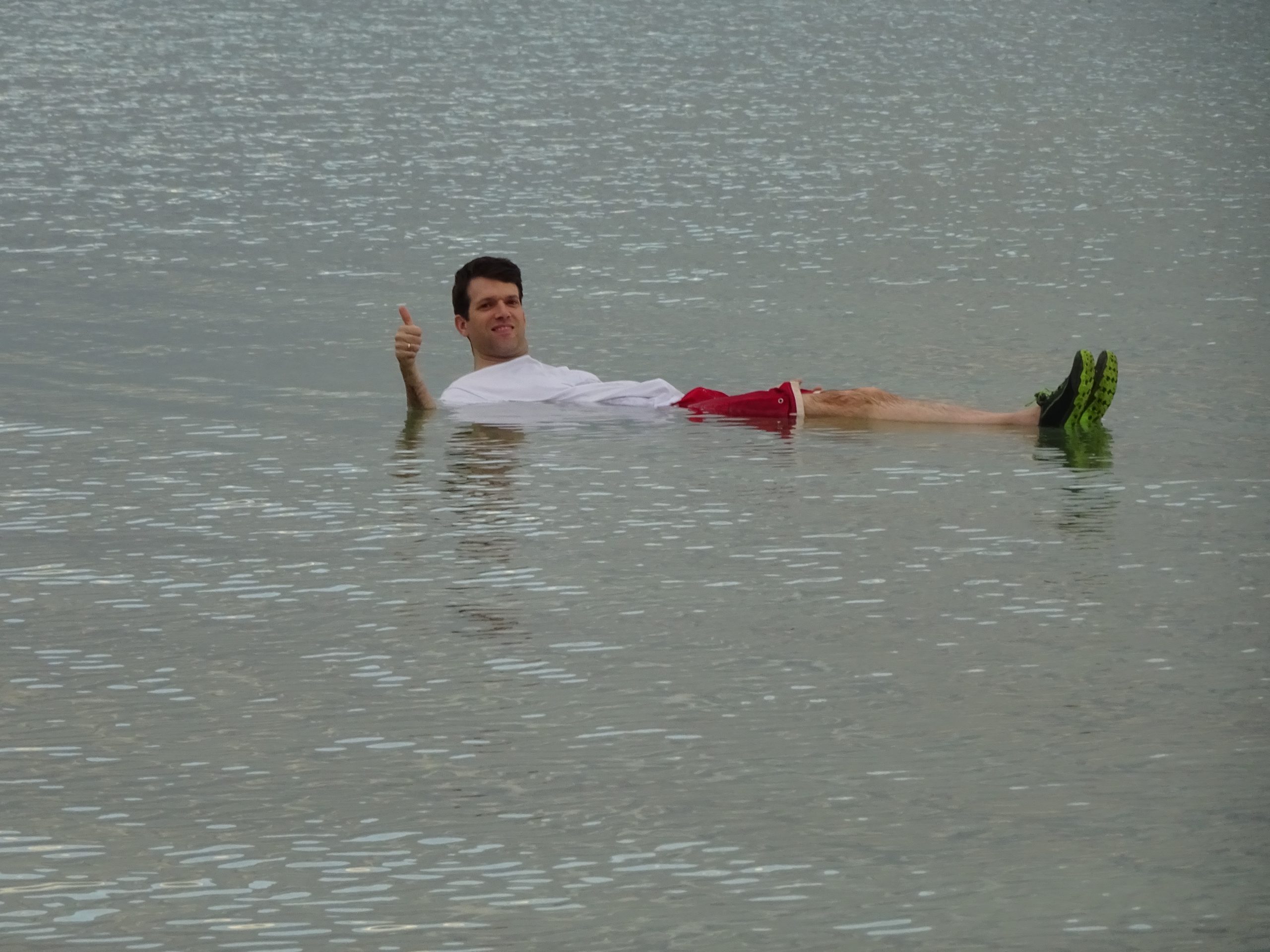
Daddy recorded videos and took pictures from the bank while I slowly waded out into the water. It felt very cold initially, but I quickly adjusted. Once adjusted, it felt quite good as I laid on my back and floated. Just as others had described, floating is effortless. It felt like I could lay there all day with no effort. In fact, the water is so buoyant that it was difficult to stand back upright.

I floated for about 10 minutes and then began to collect examples of some of the larger, round salt rocks on the bottom to hopefully take home. As Gary had warned, the bottom is completely covered in these salt deposits, and it would have been really painful without my water shoes.
I expected to be really cold when I got out of the water, but I really wasn’t. However, after rinsing off in the freshwater shower by the beach I was freezing. I’m sure there is a scientific explanation for this.
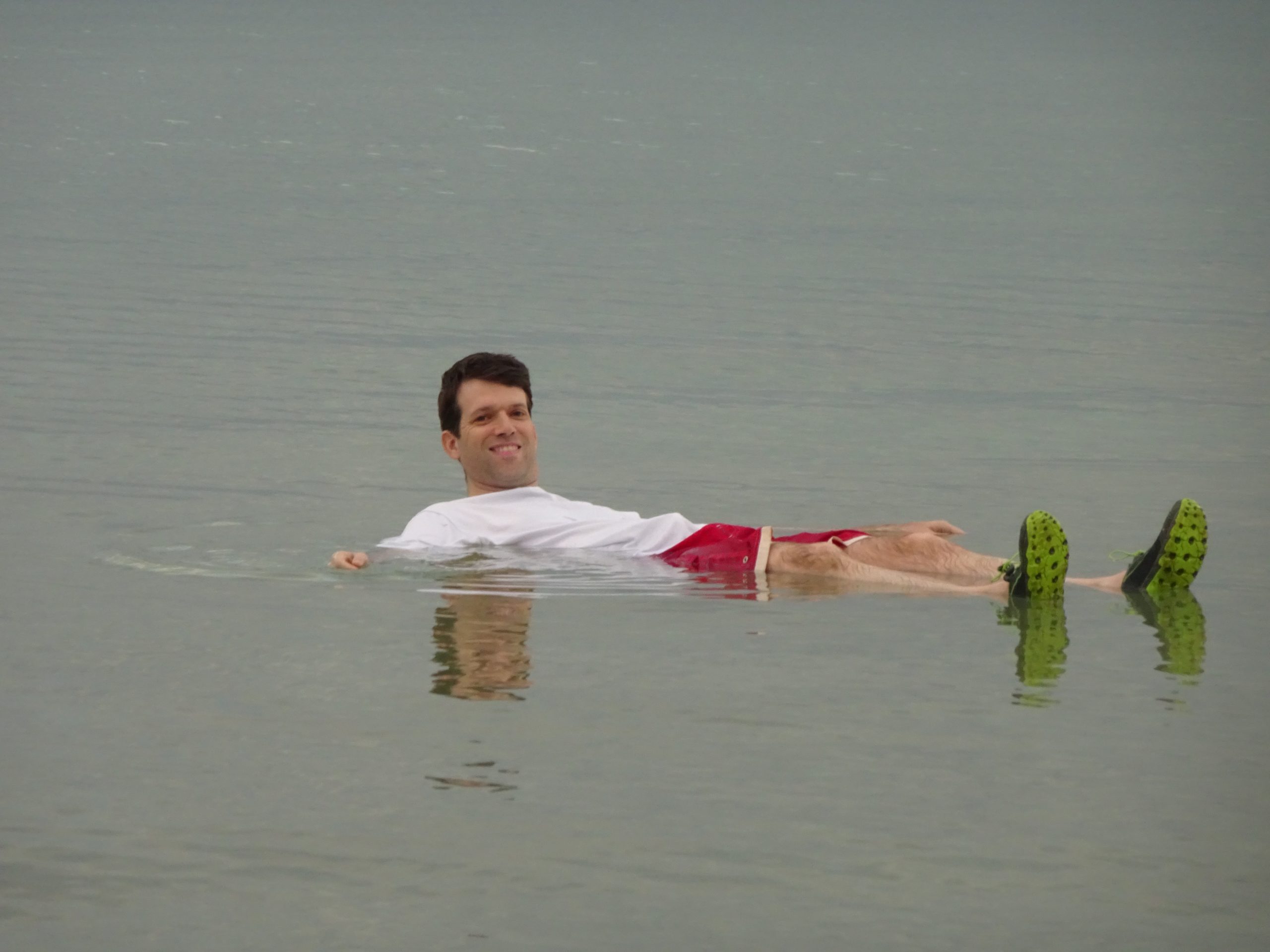
Floating in the Dead Sea was an incredible experience, and one I most definitely will never forget.

After getting back to the hotel, I went to the room for a shower and then met my dad and Claudean in the hotel restaurant for breakfast. I again had fried eggs (which were difficult to order since the cook did not speak English), 5 different types of cheeses, and a cappuccino with a foam heart drawn in the top. The cappuccino was delicious, but I ended up feeling a bit shaky the rest of the morning since I am not used to caffeine.
Around 9:15am we began to load up the bus for our short ride to Masada. Today we were ultimately making our way to Jerusalem where we would stay for the final three nights of the trip.
Masada

It took about 10 minutes to drive from the Daniel Dead Sea Hotel to Masada right on the shore of the Dead Sea. Murad explained that the name Masada means “fortress,” and Masada is a mountain where Herod the Great built a palace fortress. All of our knowledge about Masada comes from the writings of Josephus and from excavations.

Murad told us that Masada rises 450m above the Dead Sea but is still just barely above sea level. Upon arrival at Masada, we watched a short movie and then took a large cable car to the top. The views of the Dead Sea were stunning.
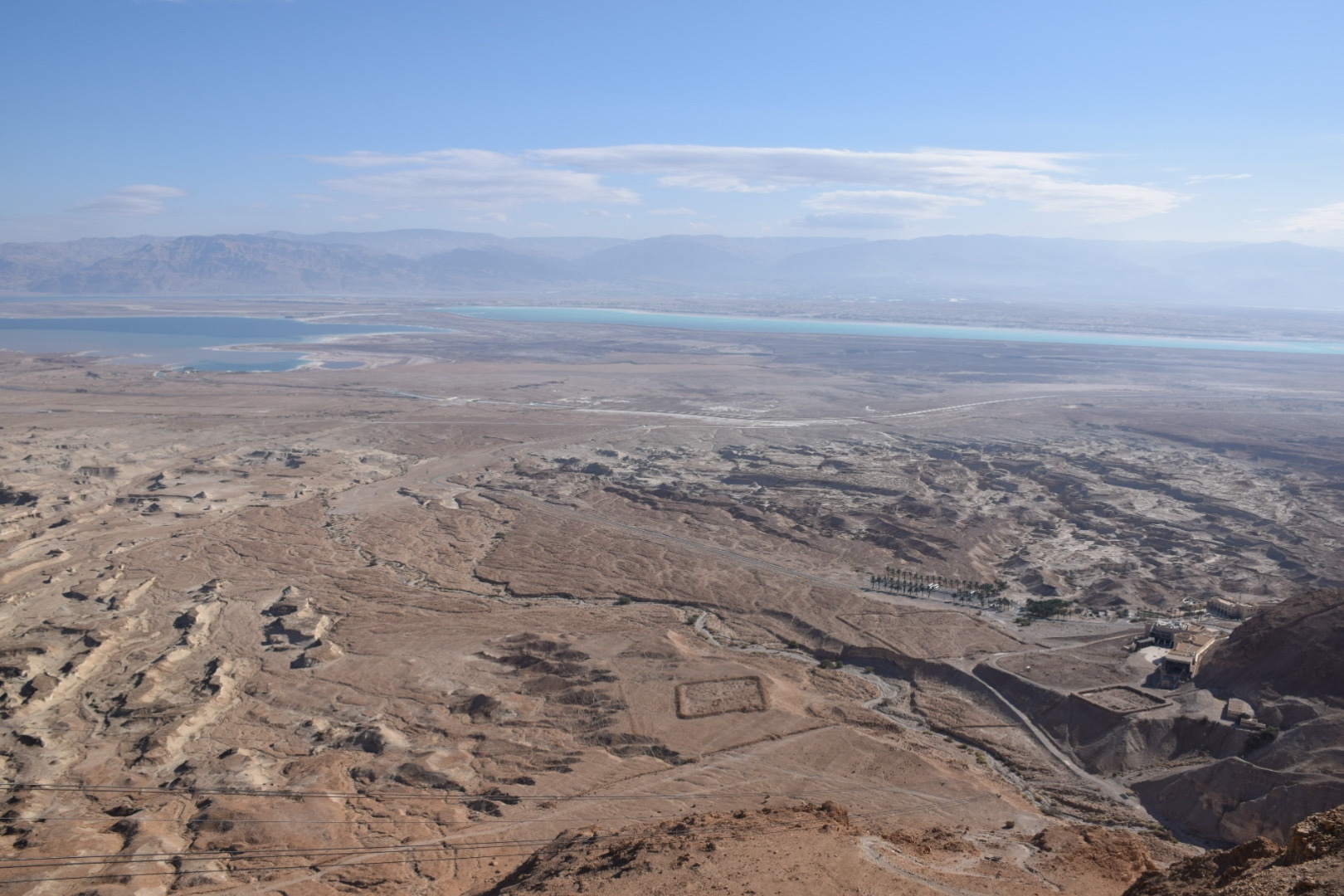
Along the tour, Murad explained to us briefly about the history of Masada. Herod the Great built two palaces on top of the mountain, but they were essentially abandoned by his sons after his death in 4 BC. Eventually the site was taken over by the Jewish zealots and/or the Sicarii (knife-wielding zealots) and became the last stronghold of the Great Jewish Revolt (66 to 73 AD). The Romans brought 8,000 troops to Masada in 73 AD and defeated the Jews who were living there.
Murad showed us many amazing things from the time of Herod the Great, and from the Jewish civilization in Masada through 73 AD, as we spent about 1.5 hours on the top of the mountain. These included:
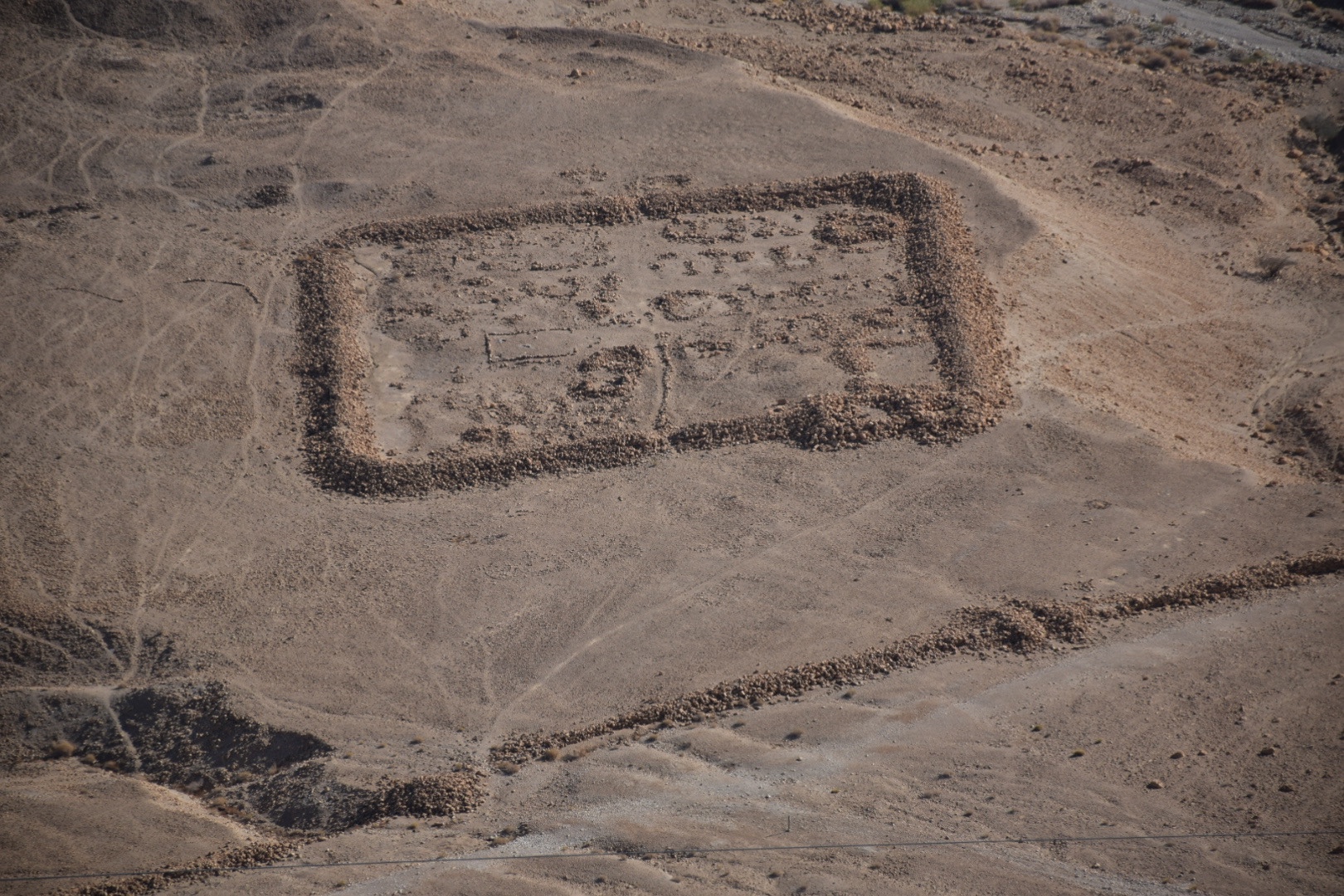
*Squares in the valley below the mountain where they have excavated the Roman encampments from the time they brought 8,000 troops against Masada in 73 AD

*The Snake Path and Snake Path Gate, from the time of Herod the Great, that were used to access Masada from the valley below. The Snake Path today is a hiking trail that provides access to the top of the mountain. This is now a bucket list hike for me.
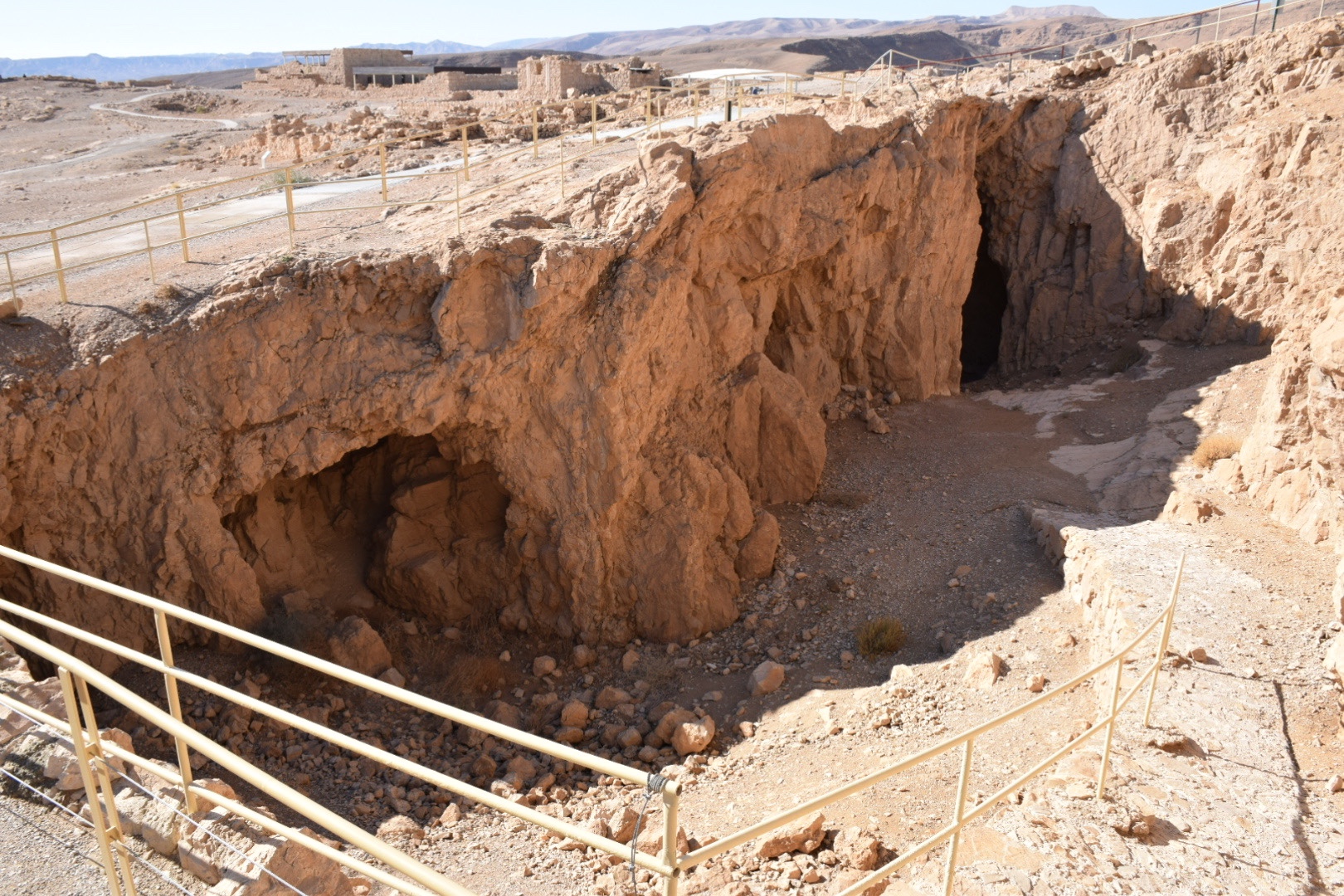
*A quarry from the time of Herod the Great that was used to mine the rocks needed for building the palaces and other structures.
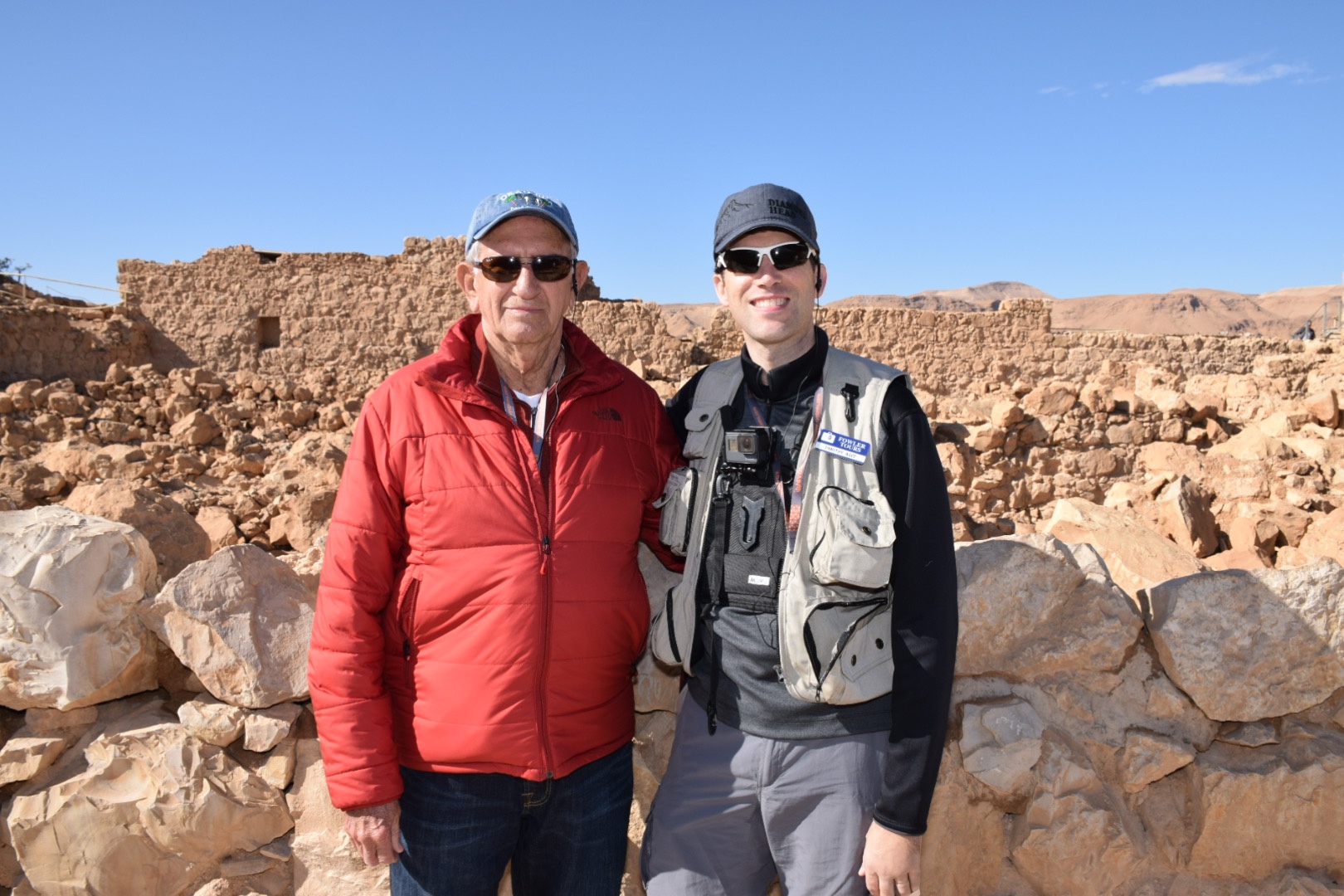
*The northern palace complex of Herod the Great. Within the palace we saw:

-The storehouses. One particular storehouse we saw had holes in the bottom that were silos for wheat and barley. It also had a two-handled jar for wine.
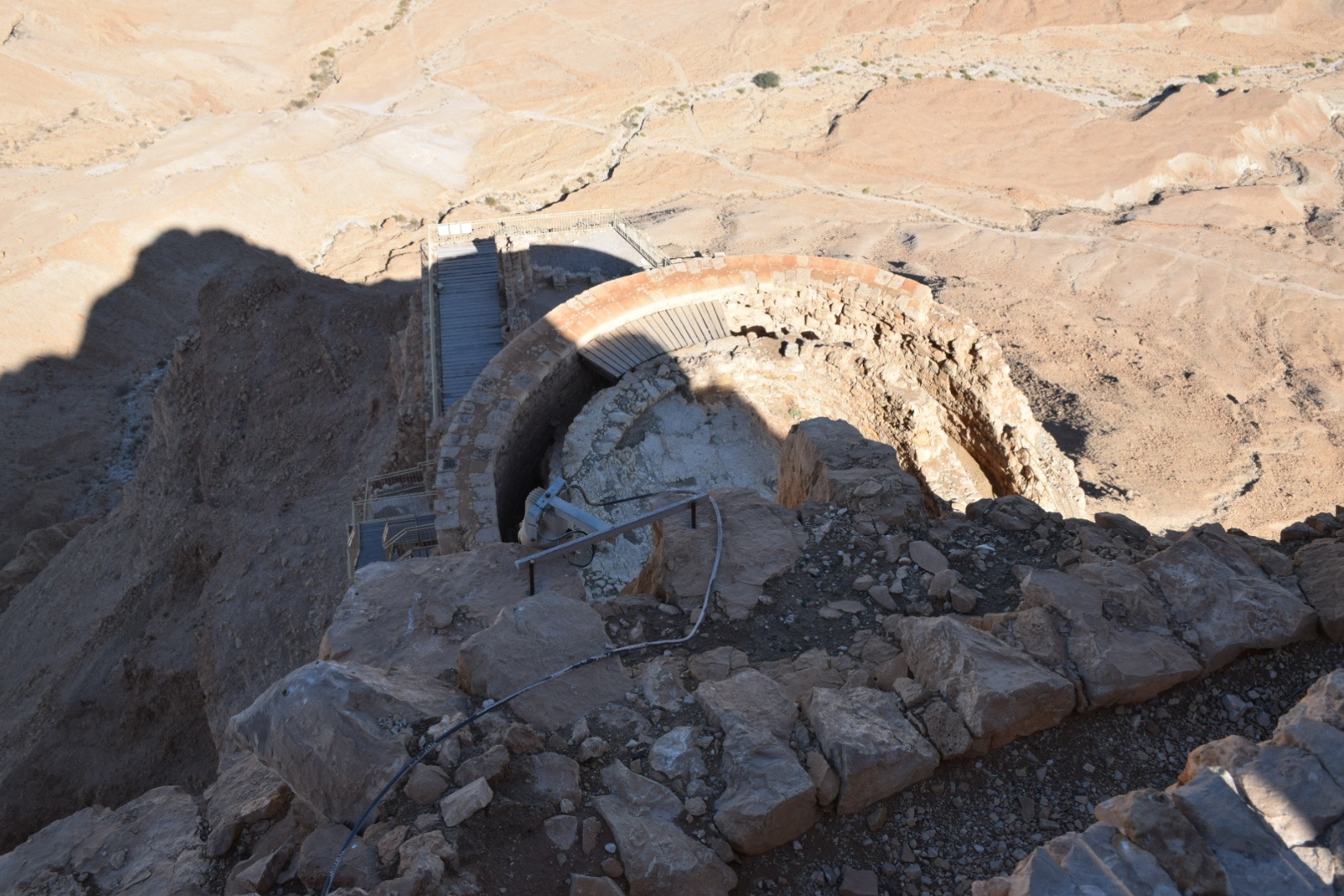
-The upper balcony with views of middle and lower balconies below. These balconies were built in “stair steps” down the side of the mountain.
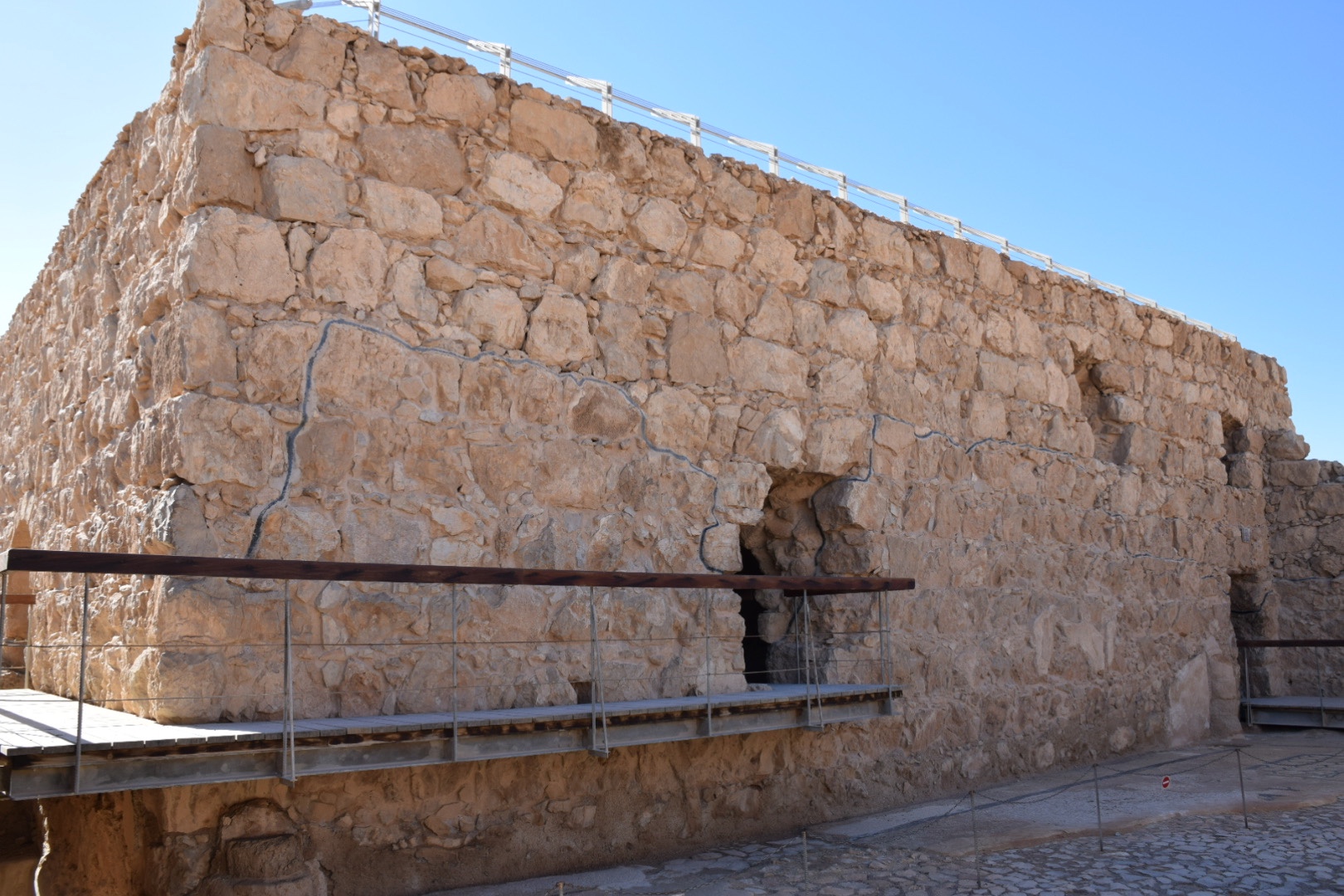
-A bath house with the same 3 types of rooms we saw in Beth-She’an: (1) Cold room (2) Cool room (3) Hot room or sauna.

After hearing the explanation again about how the sauna worked, it made a lot more sense than before. The floor was raised by series of short pillars. Fires were set through arches under the floor by the servants. Water was run under the floor and up the walls to make the surface hot and then cold water was poured on the walls and floor to make steam.
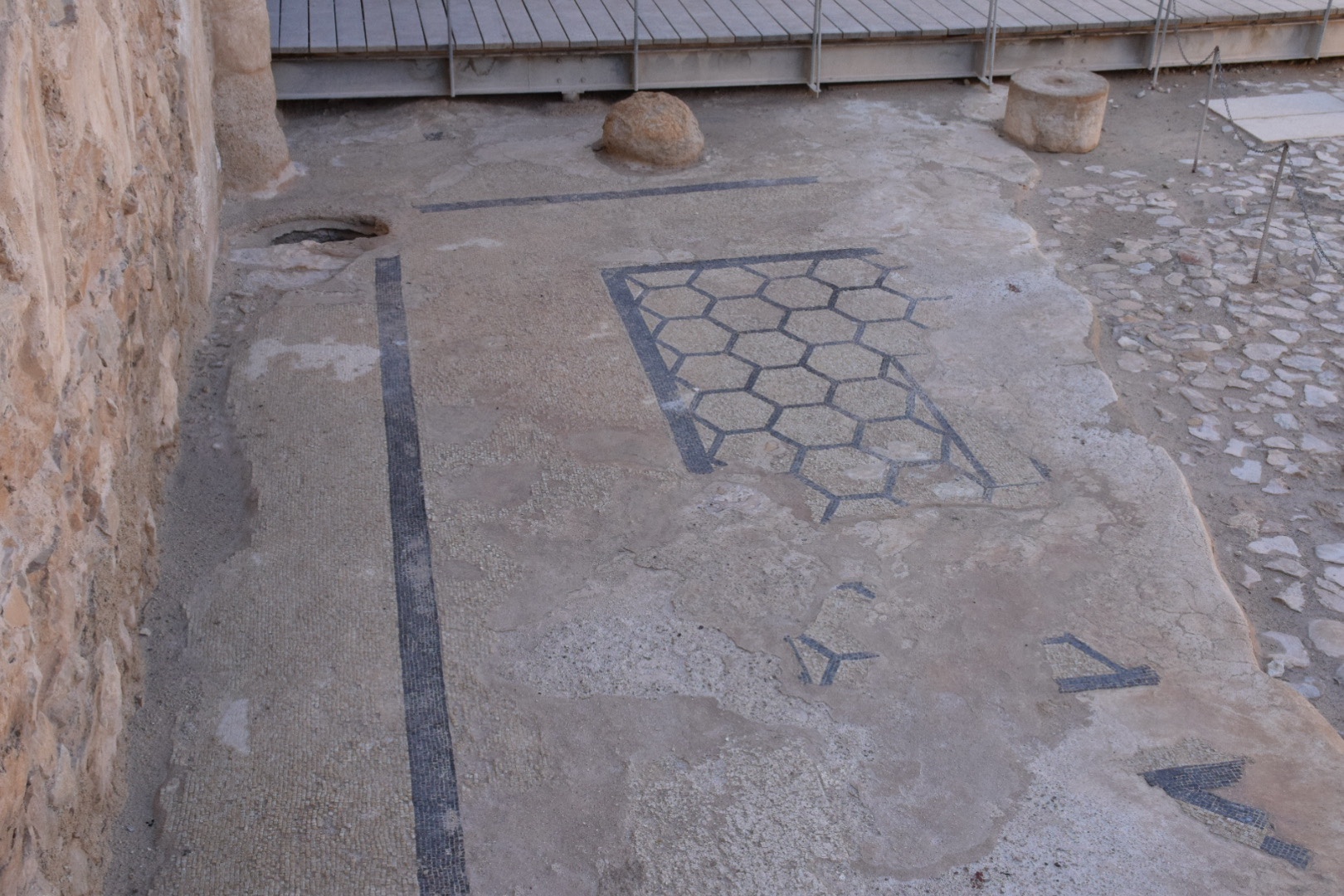
This was a very impressive structure and there was a beautiful mosaic on the outside.

There was also a ritual bath on the outside of the bath house that was likely added by the Jews after Herod’s death.

On a side note, there was a very short and skinny door in the bath house between the cool room and the sauna. This may say something about the stature of Herod the Great.

*Outside the palace complex, we saw a water system from the time of Herod the Great that was used catch rainwater and carry it into tunnels at the base of the mountain. Slaves would carry water to the palace through the water gate above.

*A synagogue from the time of the Jewish control of Masada. Josephus records that a speech was made at this synagogue by Eleazar ben Ya’ir during the Roman attack in 73 AD, and that 10 men were chosen to kill all the remaining Jews to prevent their capture (cast “Lots”). Murad talked to us a length about this “suicide,” and about how he thought it would have been impossible for Josephus to know this. He said that while many still hold to the traditional view of what happened at Masada, some modern scholars believe that Josephus adapted a story from his past when he was a Jewish commander, and that this “suicide” was a myth given to strengthen the state of Israel. He said that he believes that all of the Jews at Masada died at the hands of the Romans. I later talked to Dr. Cloud about this and he said that he agreed with Murad.

*A section of the outer casement wall from the time of Herod the Great known as the “Casement of the Scrolls.” It was given this name because two of the Dead Sea Scrolls were found there. One of these two scrolls contained the passage from Ezekiel about the vision of the valley of the dry bones (Ezekiel 37).
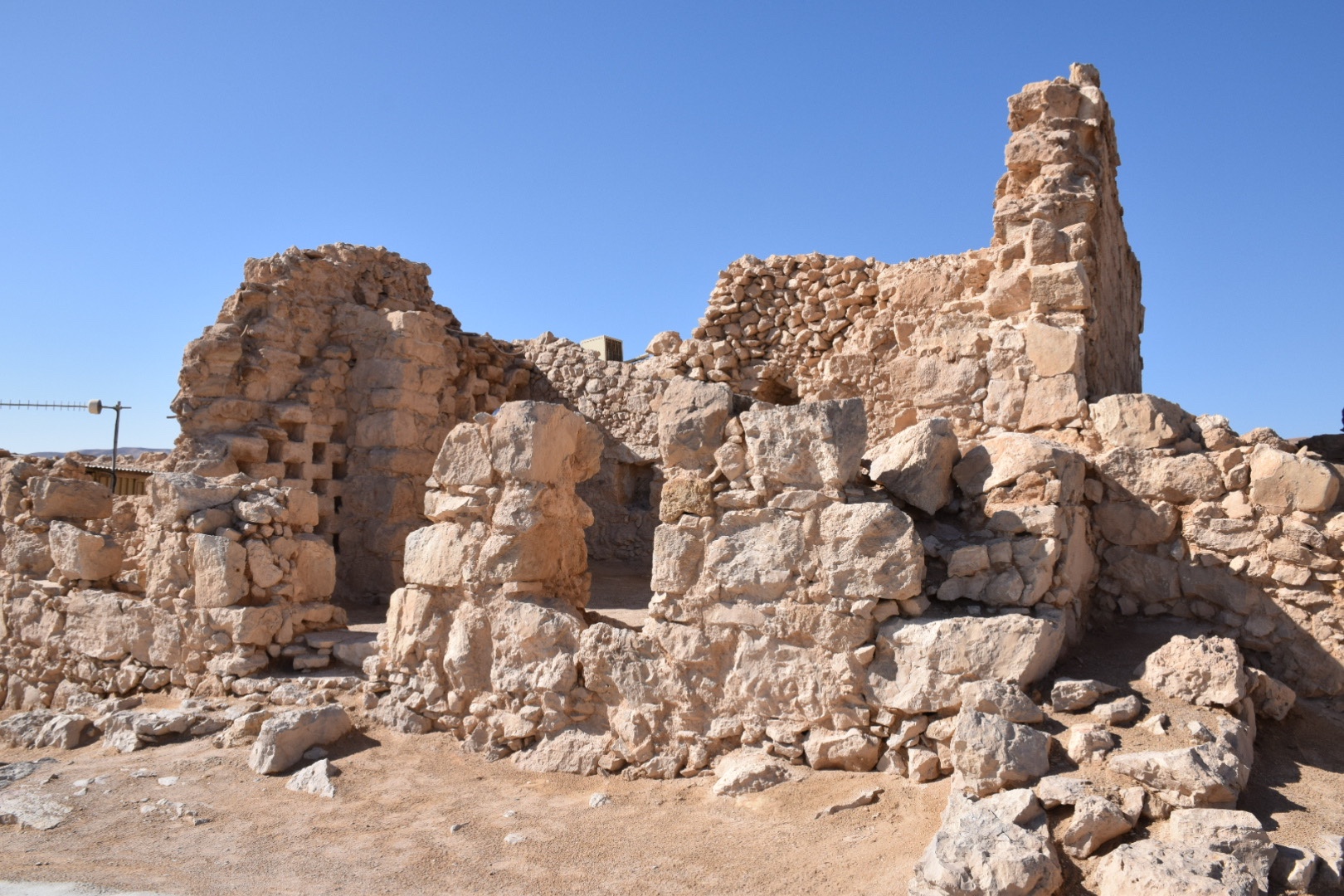
*The Columbarium Tower within the outer casement wall of the city. This tower was a “dovecot” or a place for raising doves. These doves would have been for meat in the time of Herod the Great.

*The point where the Romans built a ramp and breached the casement wall during the attack in 73 AD.
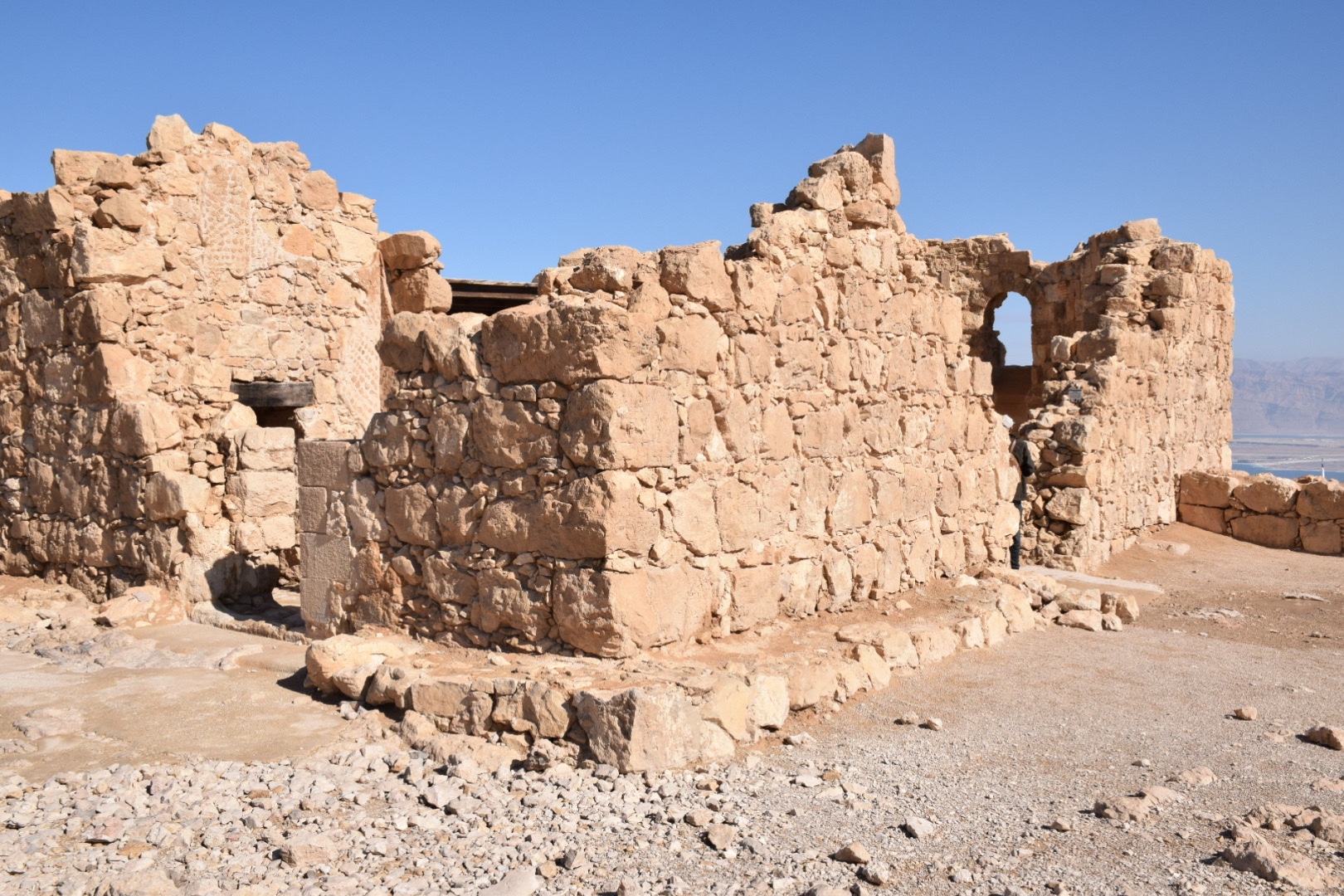
*A Byzantine church from the 6th century AD. This was for the monks who lived in Masada.
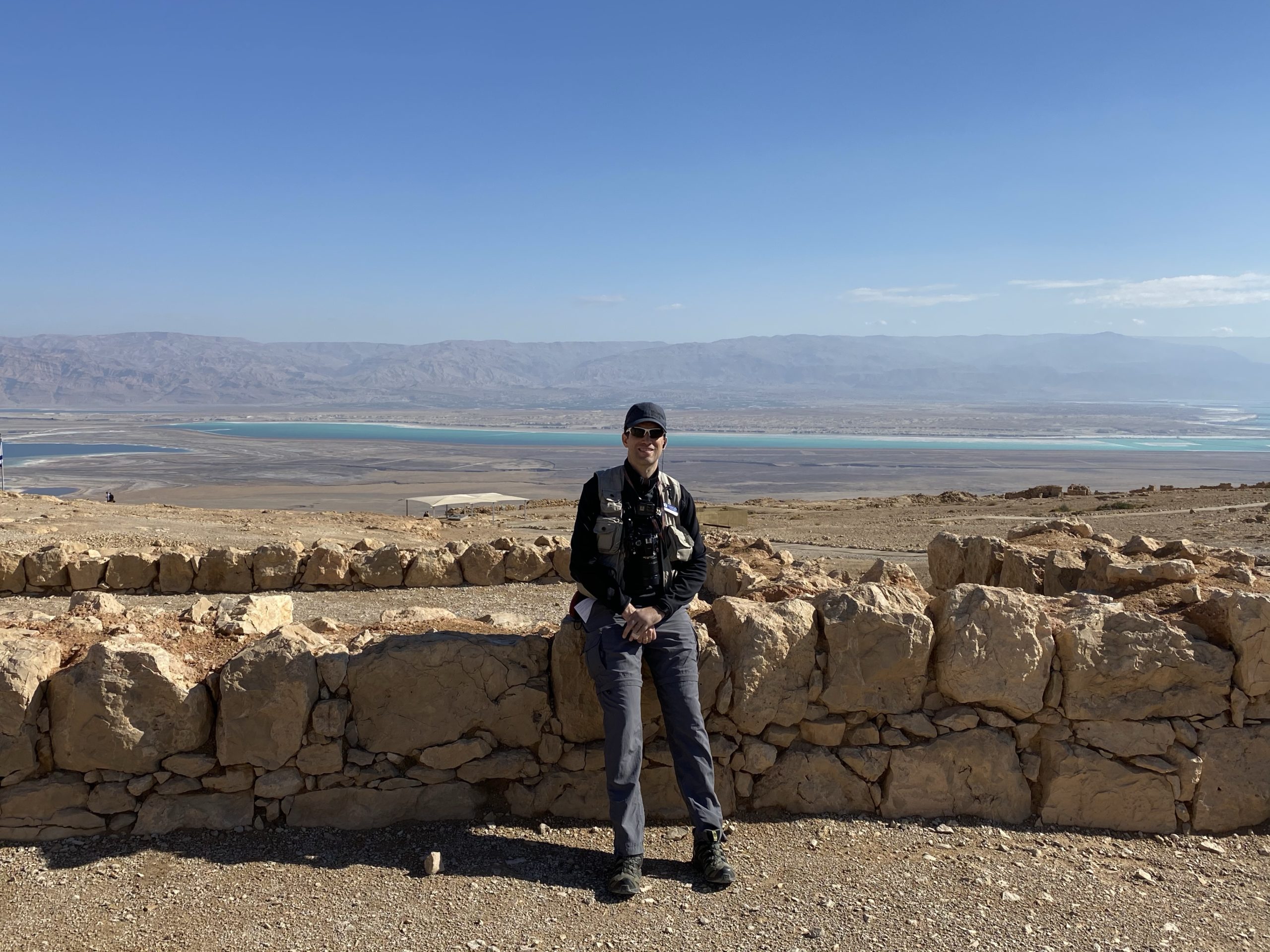
Masada was another amazing site and definitely one of my favorites on the trip.
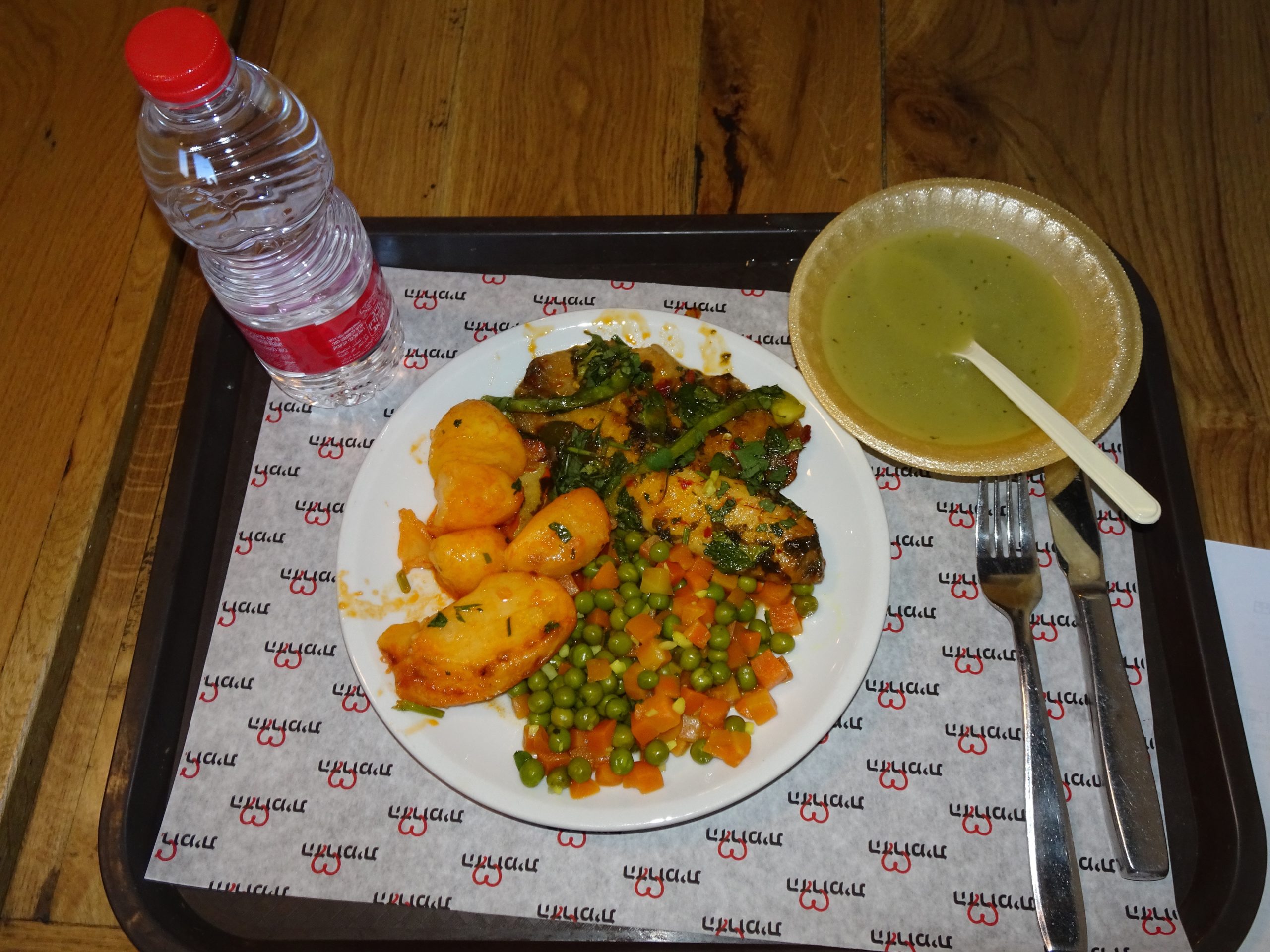
After coming back down the mountain via cable car, I had lunch at the Masada Restaurant with some really good fish and vegetables.
Tel Be’er Sheva / Be’er Sheba
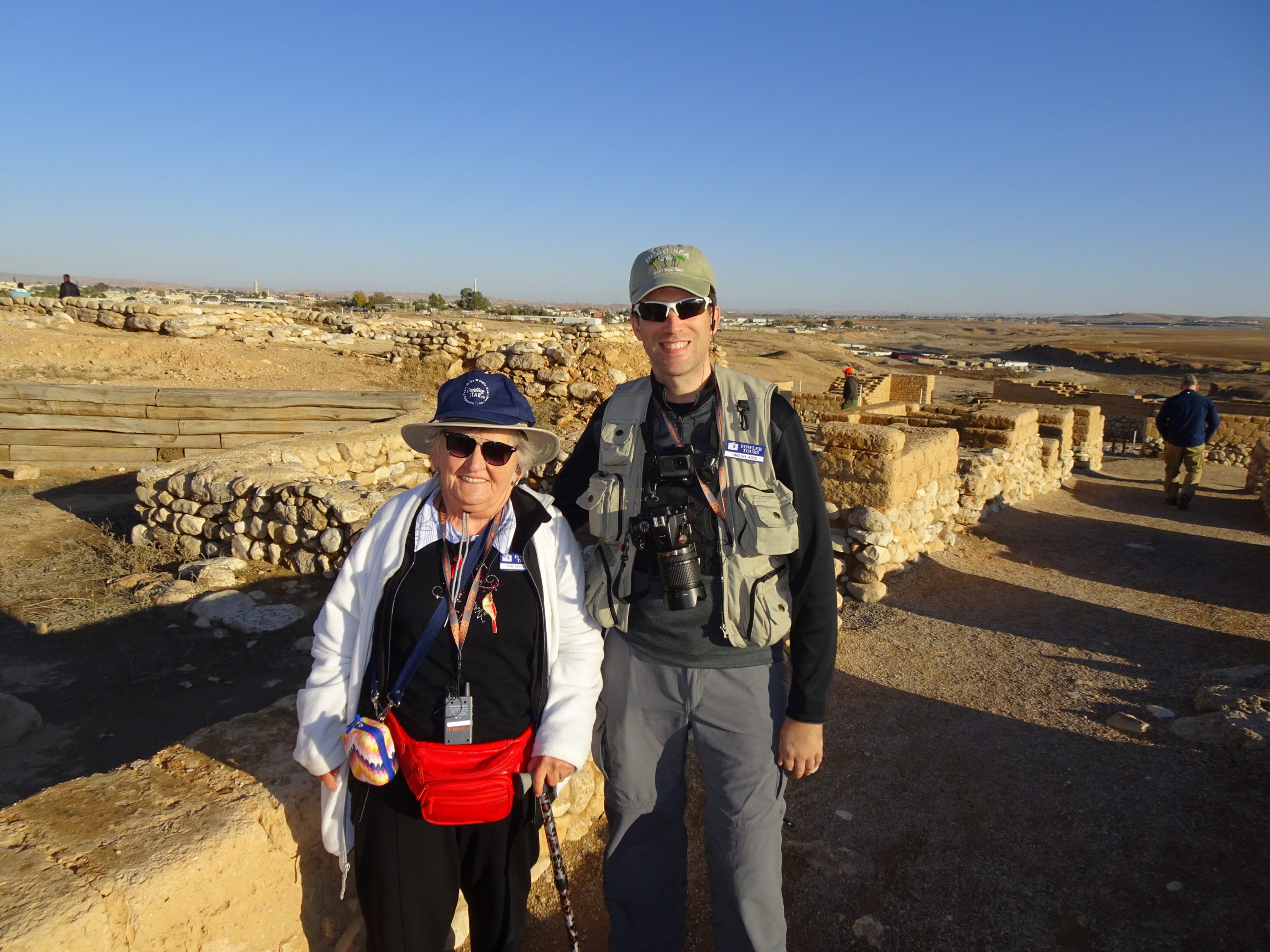
Upon leaving Masada, we headed back south toward the resort area where we stayed last night in order to get to Tel Be’er Sheva.
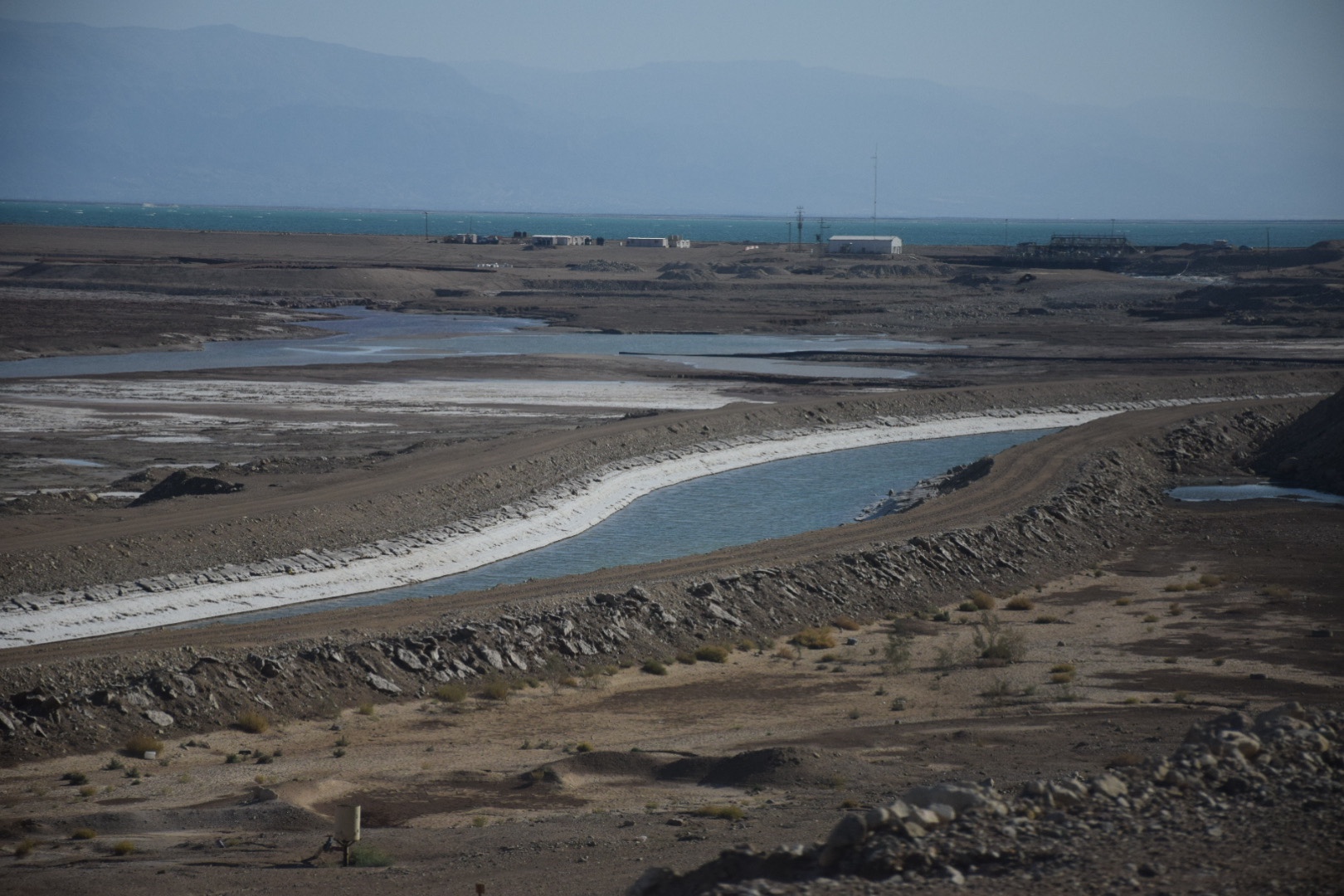
Along the way, Murad pointed out that the water from the deeper, northern part of the Dead Sea is being brought to the southern, resort area, via large canals. This is due to the water receding in the Dead Sea.

We were able to see the canals and the “pools” in the Dead Sea outside the resorts that are used to collect the water.

From the resort area, we drove west out of the Wilderness of Judea and into the Negev. Both of these are beautiful desert areas. Murad explained that half of Israel is desert. Along the way we saw a Bedouin town and Murad talked to us about the Bedouins and the struggle between Israel and the Bedouins.
At about 3pm, we arrived at Tel Be’er Sheva which lies east of the modern city of Be’er Sheba and west of the new Bedouin town of Tel Sheva. 15 strata have been discovered at this Tell, but most of what has been excavated, and is visible, is from the 9th century BC. The name of this ancient city is derived from “be’er,” meaning “well or fountain” and “sheva,” meaning “oath.”
Be’er Sheva (or Beer-sheba) is mentioned 33 times in the Bible. It is often used when describing a border, such as “from Dan to Beer-sheba” (Judges 20:1; 1 Sam. 3:20; 2 Sam. 3:10, 17:11, 24:2, 24:15; 1 Kings 4:25; 2 Kings 23:8).
It is also a significant center in the patriarchal narratives: Abraham dwelt at Beer-sheba (Genesis 22:19), Abraham and Abimelech entered a covenant at Beer-sheba (Genesis 21:32), and Abraham planted a tamarisk tree at Beer-sheba (Genesis 21:33). The Lord spoke to both Isaac and Jacob, Abraham’s son and grandson respectively, at Beer-sheba (Genesis 26:23; 46:1).
Beer-sheba is the site of two significant wells from scripture: Abraham’s well at Beer-sheba was seized by Abimelech’s men (Genesis 21:25), and Isaac’s servants dug a well at Beer-sheba also (Genesis 26:25).

Murad took us up to the top of the tell and first showed us a 70-meter deep well outside the wall that could possibly either be the well of Abraham that is described in Gen 21 or the well of Isaac as described in Gen 26.

I don’t know if this is the actual well or not, but it is pretty cool to think that it might be. Murad read from Gen 21 as we stood by the well.
As we passed through the walls, Murad showed us the excavations from the 9th century AD of the:
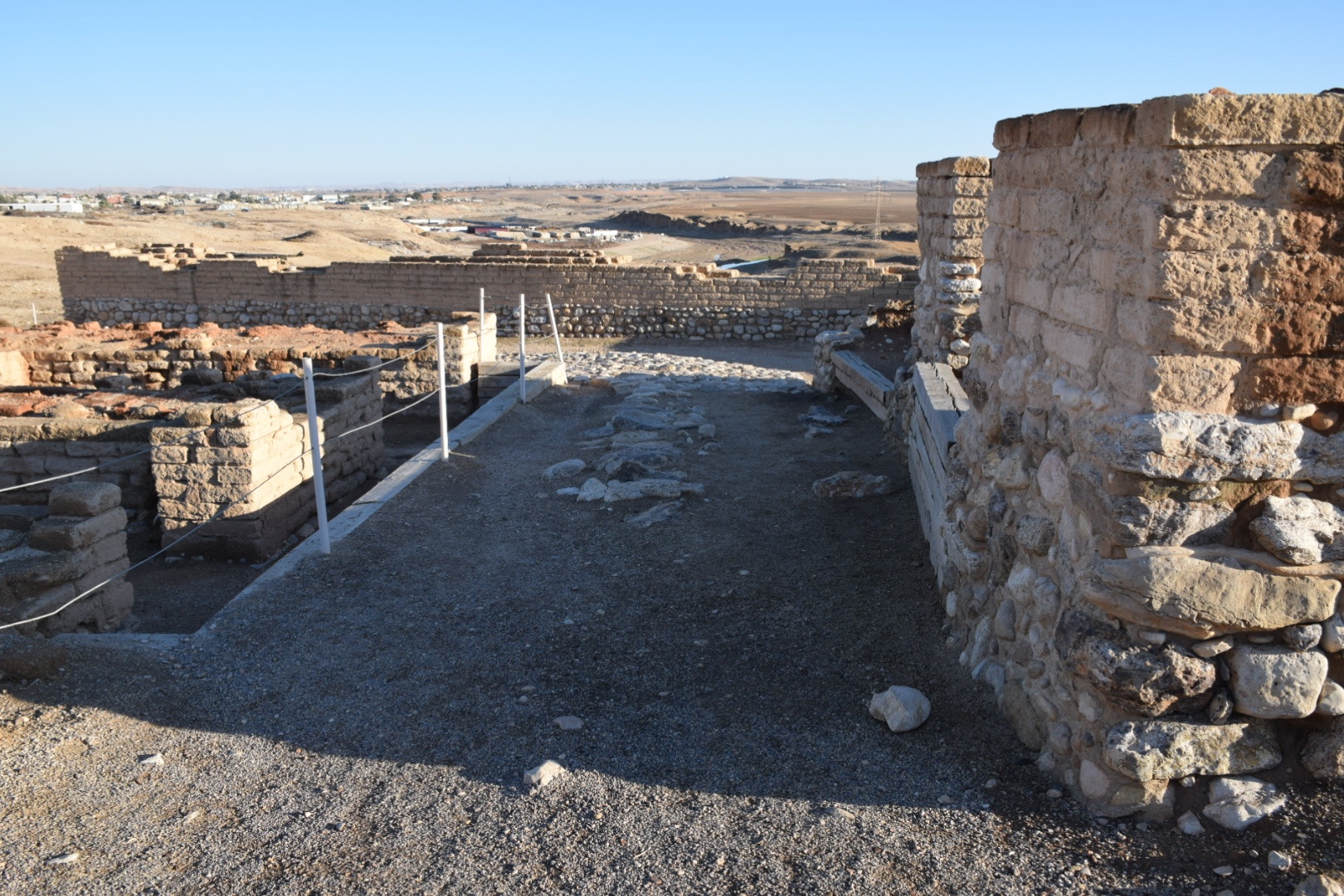
*Main gates

*Storehouses

We then climbed an observation tower at the back of the site and were able to see the skyline of the modern city of Be’er Sheva, which is the capital of the Negev with a population of 220,000. In the opposite direction, we could also see the new Bedouin town of Tel Sheva.
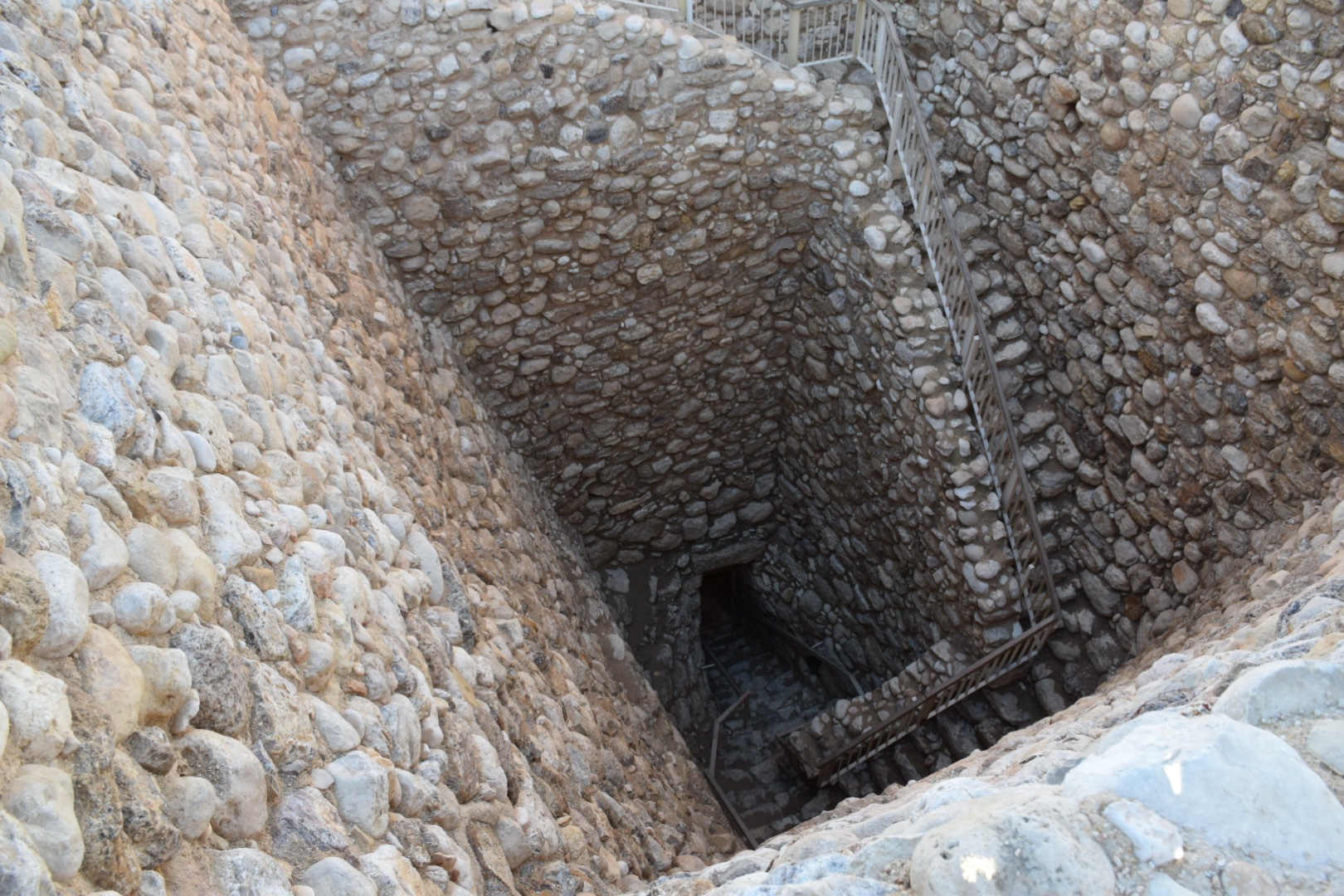
After climbing back down the tower, we climbed down into the ancient water system that lead back outside of the city.
Valley of Elah

After leaving Tel Be’er Sheva, we headed north toward the Valley of Elah. It took about an hour to get there, and the terrain became much greener along the way. The Valley of Elah is the modern Wadi es-Sant, and is the location where David killed Goliath in 1 Sam 17 (Also mentioned in 21:9 in connection with the battle). The Valley of Elah ran east to west between Israelite and Philistine territory, with Gath to the west, which made it a likely spot for a clash between the two powers. In 1 Samuel 17, the Israelite forces were probably on the hills on the north side of the valley, with the Philistines opposite them.

We arrived at the valley just before dark. After a short hike to the wadi, Dr. Cloud talked to the group again about David, much as he did yesterday in En Gedi. He talked about the misconception of David being a little boy and the true meaning of the Hebrew word “na’ar” (נַעַר) that is used to describe him.

While there, I selected 5 smooth stones (1 Sam 17:40) from the wadi, just as David did before facing Goliath.
Jerusalem
By the time we walked out of the valley it was almost completely dark. For the last leg of our drive, we headed northeast, up the hills into the city of Jerusalem.
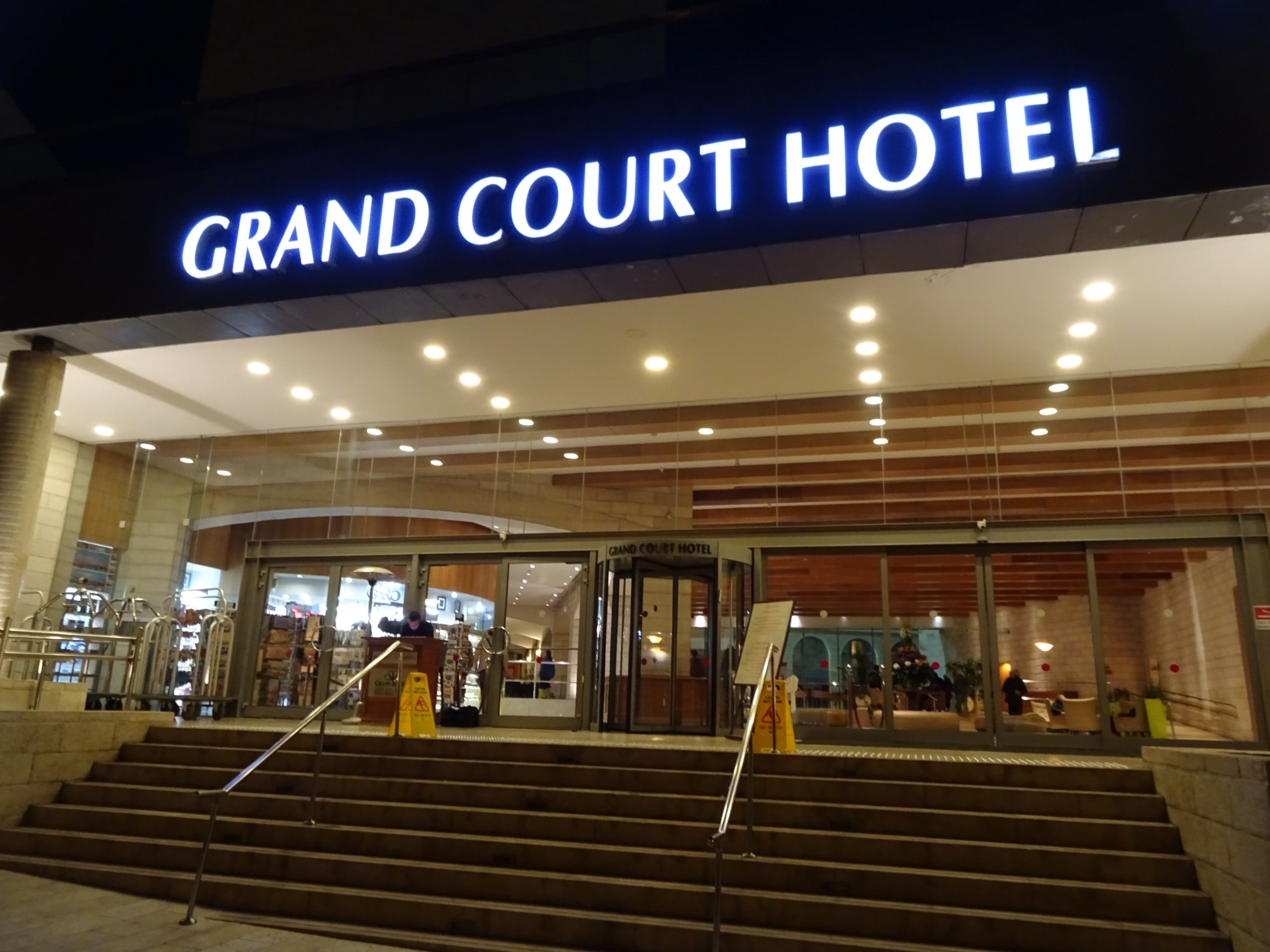
After about 45 minutes, we arrived at the Grand Court Hotel. We got checked in, and then enjoyed another delicious dinner.
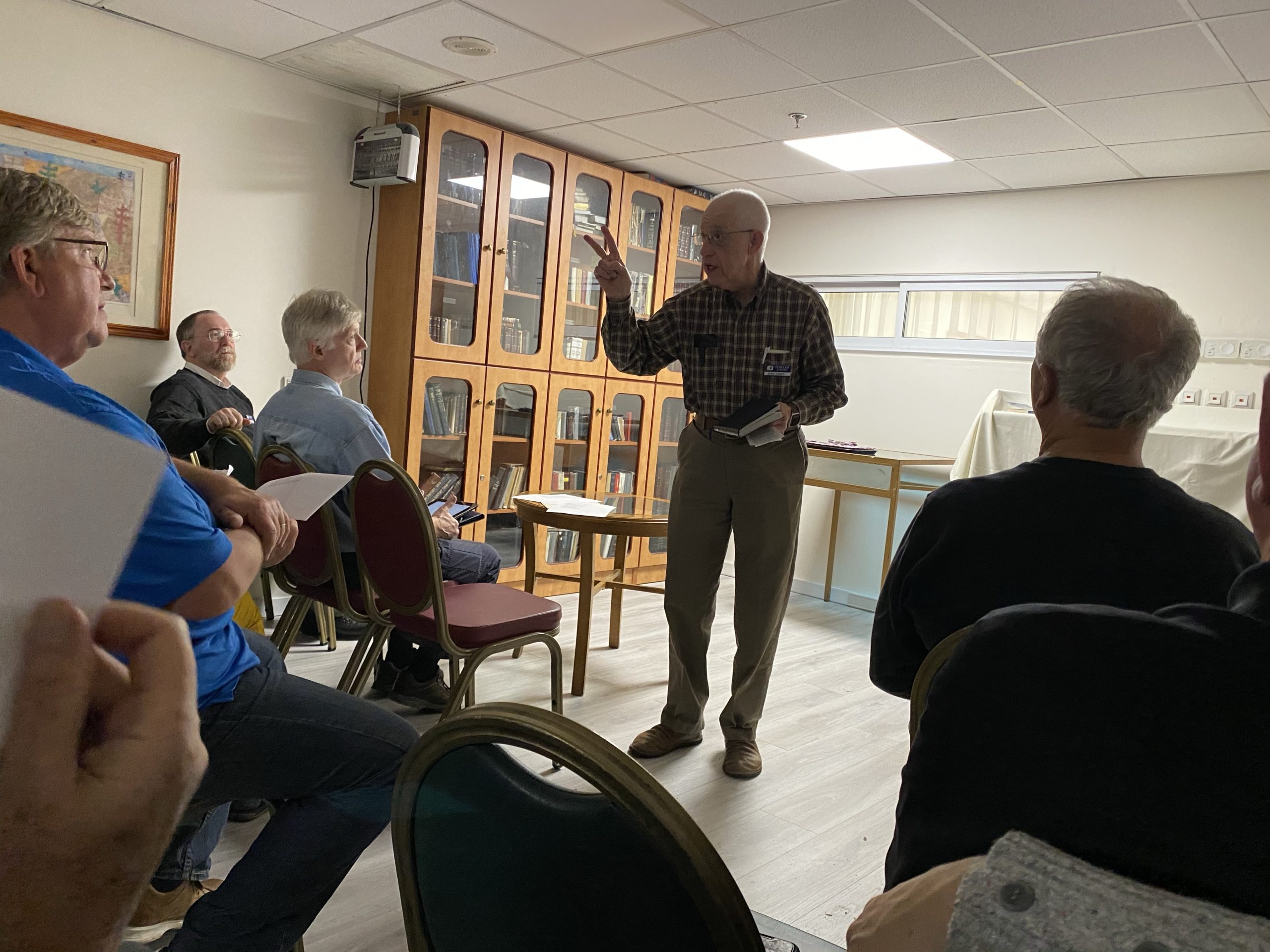
At 8pm we all gathered together at the hotel for a wonderful worship service that consisted of a number of men reading scriptures, singing songs, and offering prayers. Jerry Barber gave us a message on giving that was bookended by the hymn “There is a Sea.” This song has taken on new meaning for me as the first two verses allude to the Sea of Galilee and the Dead Sea.
I just got off the phone with Olivia and Kate back home, and it is always good to talk to them. I’m really looking forward to the final two days of our trip, but I’m also looking forward to being back with them in three days. I’m now sitting in the hotel lobby finishing up this post around 10:30pm. Tomorrow we spend the day in the Old City of Jerusalem.
